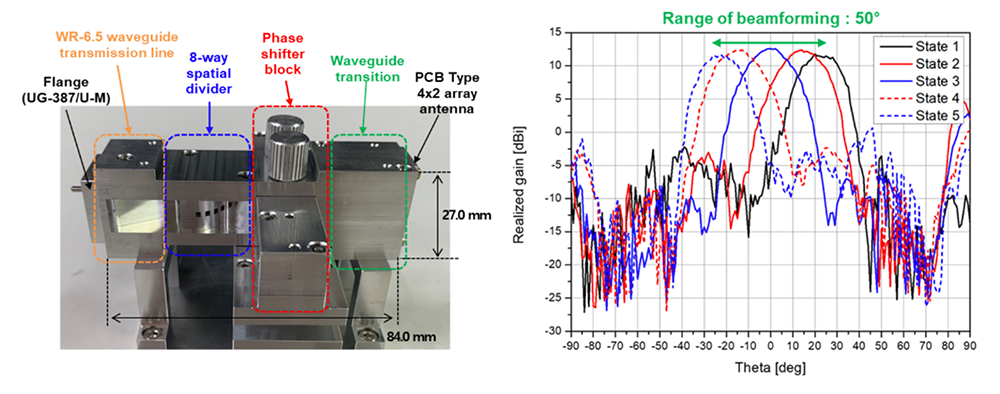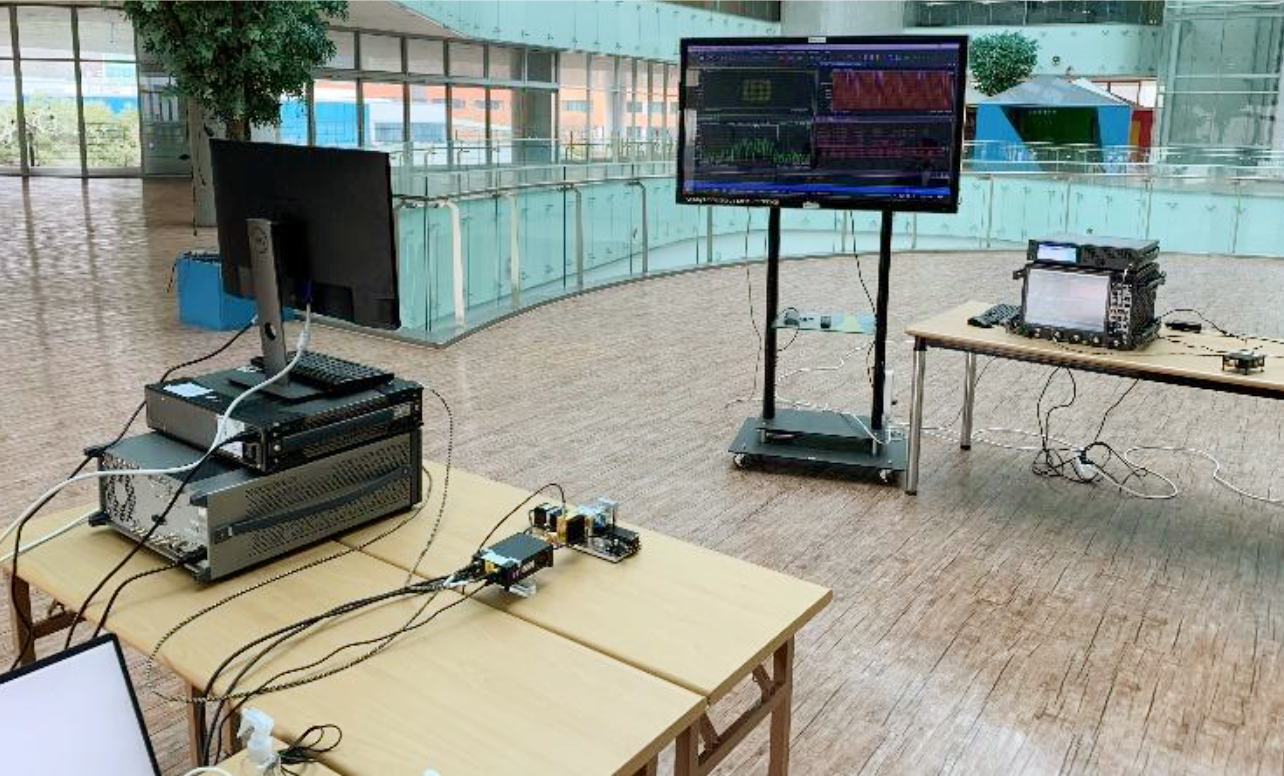The LG-KAIST 6G Research Center has developed a waveguide-based ultra-wideband beamforming system with phase control and low-loss characteristics at THz frequency. The bandwidth of this beamforming system is about 11 times wider than the current domestic millimeter wave 5G communication system, providing 4.2 times better low-loss performance than commercial products. In addition, this beamforming system shows effective beam width and beam steering range, confirming the level of performance that can be used for mobile communication.
The 5G mobile communication system was commercialized in 2019; the commercialization of the 6G mobile communication system is expected in 2030. In particular, in 6G mobile communication, a terahertz frequency broadband wireless transmission technology is required to support a high data rate of 1 Tbps and many IoT devices. Beamforming technology is the key to overcoming the limitations of the communication range in the THz band frequency. However, realizing a beamforming system with wideband performance and low loss at terahertz frequency is a challenging technical task, and many research groups around the world are competing for a beamforming solution to solve this problem. The LG-KAIST 6th Generation Research Center has proposed a low-loss, new focal-type spatial power divider and a waveguide-based ultra-wideband tunable phase control structure solution.
In the case of the power divider of the existing array antenna, the insertion loss was high due to the very complex structure. However, the proposed spatial power divider has the advantage of simplicity and low loss. In addition, in the case of the ultra-wideband phase control structure, it is possible to implement a phase shift for beamforming of the array antenna by controlling the geometry of the inside of the waveguide. To verify the THz beamforming solution with two core technologies, a THz beamforming system of a waveguide-based 8-array antenna was fabricated and measured. As a result of the measurement, the beamforming system was found to cover the operating band of 143 to 170 GHz (27 GHz bandwidth) with an insertion loss of 1.53 dB. Measuring the beamforming performance with the D-band antenna measurement system developed by KAIST, the effective beam width was 20 degrees and the steering beam angle was 50 degrees.


Although 6G mobile communication is in the stage of discussing technical concepts, KAIST’s THz beamforming solution is considered to show the world’s best performance supported by a single beamforming solution. The LG-KAIST 6G Research Center under the KAIST IT Convergence Research Center developed a source technology for wireless transmission in the THz frequency band, and evaluated it to show global research capabilities for 6G mobile communication technology.
Dr. Dang-Oh Kim KAIST Institute for IT Convergence
Homepage: https://itc.kaist.ac.kr
E-mail: dangoh@kaist.ac.kr






